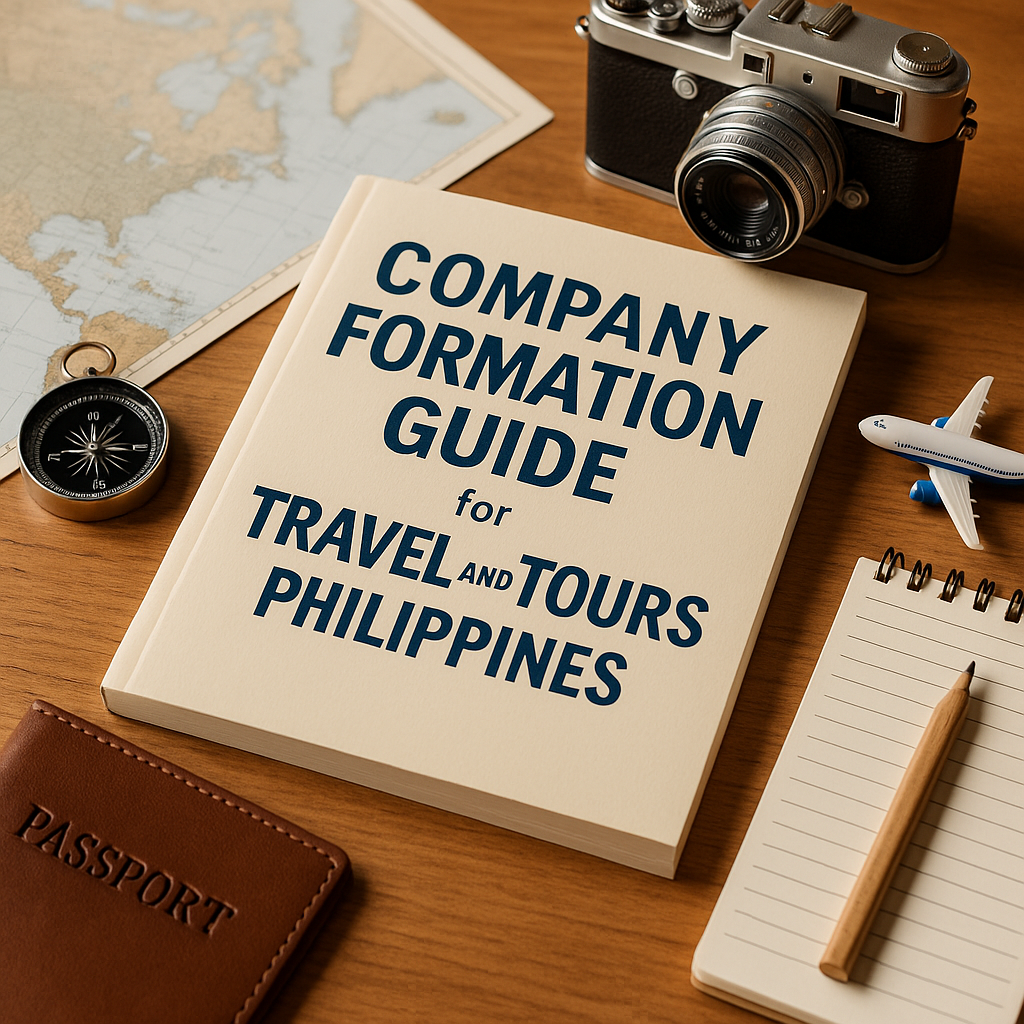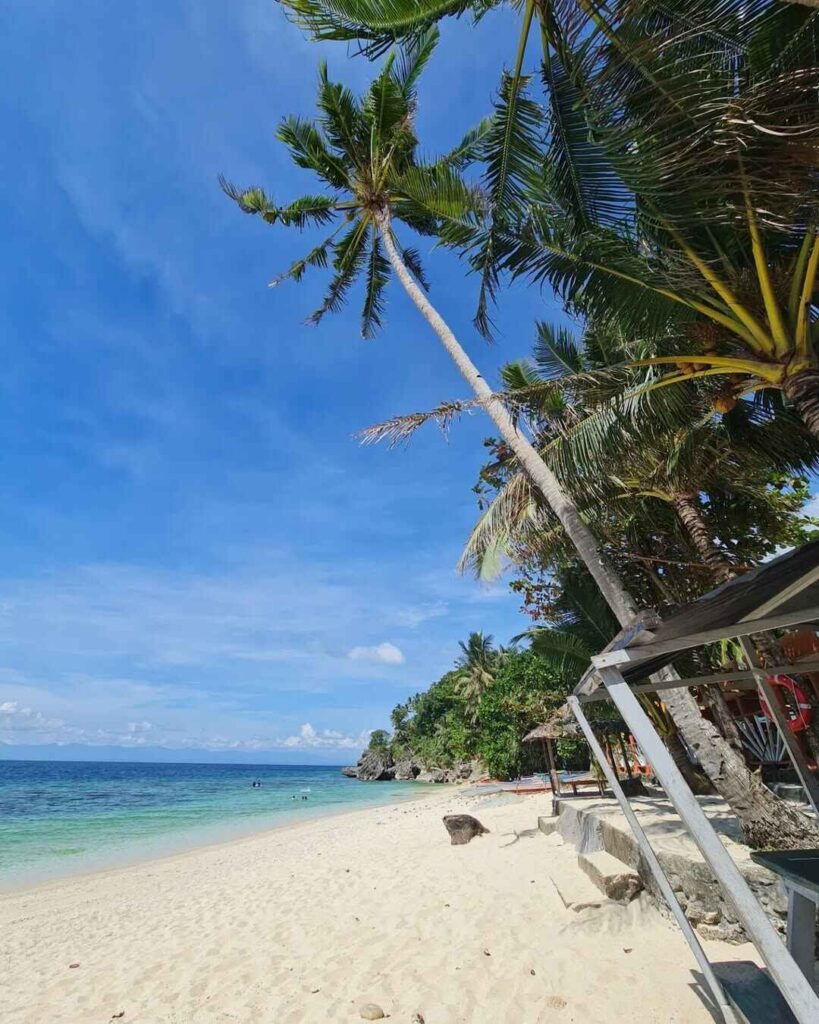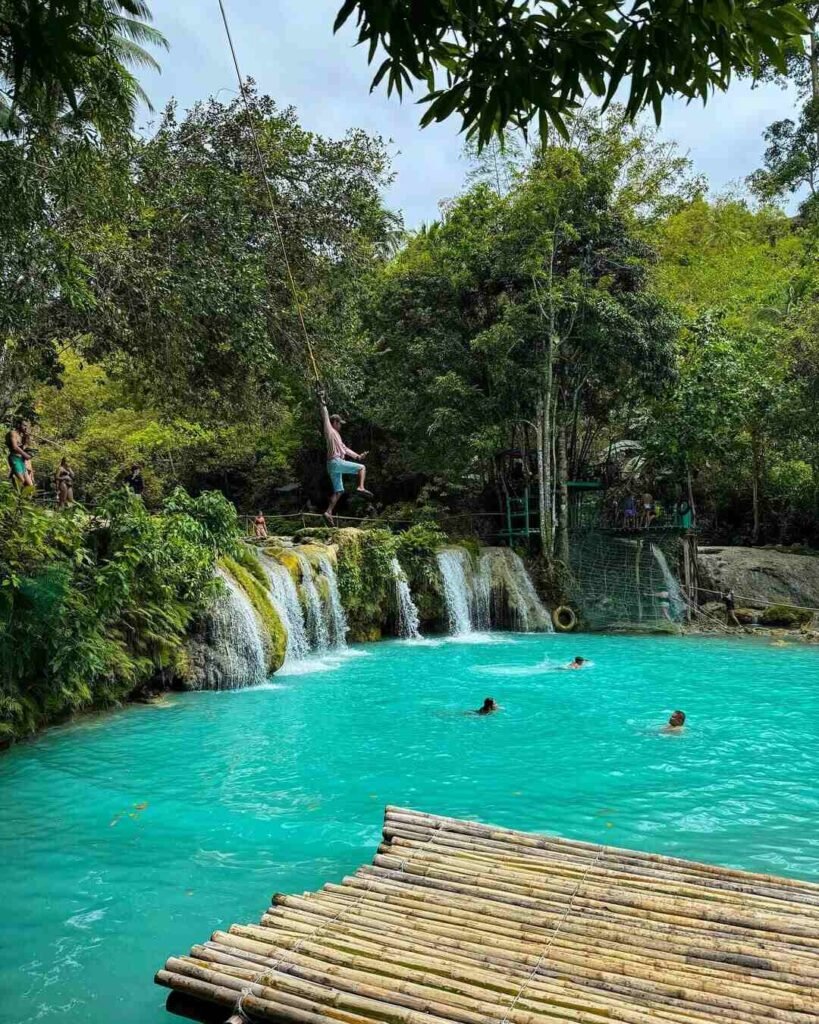
1. Introduction: Turning Wanderlust into a Legit Business
I used to be that friend who planned everyone’s trips—whether it was a weekend in Tagaytay or a week-long getaway in Siargao. Eventually, I realized that what started as a hobby could become a real business. That’s when I learned about company formation—the process of legally establishing a travel and tours business in the Philippines.
In simple terms, company formation means turning your passion for travel into a legitimate enterprise. It’s more than just creating Facebook pages or posting tour packages online; it’s about registering your business with the Department of Trade and Industry (DTI) or Securities and Exchange Commission (SEC), obtaining the right permits, and complying with Department of Tourism (DOT) accreditation.
Formal registration matters more than most beginners realize. It builds credibility with clients and travel partners, protects you legally, and opens opportunities for collaborations with hotels, airlines, and even local tourism offices. When I finally registered my travel business, it gave me access to bigger partnerships and clients who valued professionalism.
In this guide, I’ll walk you through everything you need to know—from legal requirements to costs, practical steps, and insider tips I’ve learned firsthand—so you can start your own travel and tours company with confidence.
Table of Contents
2. Understanding Company Formation for Travel and Tours
What is Company Formation?
In the simplest terms, company formation is the legal process of creating a registered entity recognized by the Philippine government. For travel and tours businesses, this involves securing registrations from agencies like DTI for sole proprietorships or SEC for corporations and partnerships.
When I started, I thought having a catchy brand name and social media page was enough. But without formal registration, your business lacks protection and legitimacy. A registered company can issue official receipts, apply for DOT accreditation, and enter into contracts with hotels, transport providers, or corporate clients—something you can’t do if you’re unregistered.
Why Register a Travel and Tours Business?
Registering your business isn’t just about compliance—it’s a statement of trust. The travel industry in the Philippines is closely regulated, especially by the Department of Tourism, which requires accredited travel agencies to operate legally.
By registering, you gain access to:
B2B partnerships with tour operators, resorts, and government agencies.
Eligibility for tourism grants and training programs offered by the DOT or DTI.
Legal protection, ensuring that clients and suppliers recognize your contracts as valid.
When my business got its registration, it opened doors to join travel expos and tourism councils. These opportunities helped my brand grow faster and connect with clients who value licensed operators.
3. Choosing Your Business Structure
Sole Proprietorship vs. Partnership vs. Corporation
When forming your travel and tours business, one of the first decisions you’ll make is choosing your business structure. In the Philippines, the most common options are sole proprietorship, partnership, and corporation—each with distinct benefits.
A sole proprietorship, registered under DTI, is ideal for small startups or individual entrepreneurs. It’s simple, cost-efficient, and requires less paperwork. When I started, I chose this route—it allowed me to test the waters without heavy investment. However, it also means full personal liability for business debts.
A partnership involves two or more owners sharing profits and responsibilities. This setup is useful if you’re starting with a co-founder who contributes capital or expertise.
Meanwhile, a corporation, registered under SEC, offers better protection since it’s treated as a separate legal entity. It’s suitable for larger travel companies aiming for long-term scalability or attracting investors.
Recommended Setup for Travel and Tours
Most travel startups begin as sole proprietorships for simplicity. However, if you’re planning to scale—perhaps offering nationwide tours or corporate travel services—transitioning to a corporation is the better choice.
A practical tip: register as a sole proprietor first, then upgrade once your business stabilizes. This approach keeps your compliance costs manageable while maintaining flexibility for expansion.

4. Step-by-Step Company Formation Process in the Philippines
Starting your travel and tours business begins with proper company formation in the Philippines. It might seem like a pile of paperwork at first, but each step serves a purpose—building trust, legitimacy, and a strong foundation for future partnerships. Below is a detailed and practical guide I personally followed when setting up my own travel business.
Step 1 – DTI or SEC Registration
The first step in company formation is to register your business name and entity type.
If you’re starting solo, go through the Department of Trade and Industry (DTI) for sole proprietorships. Visit the DTI Business Name Registration System online, search for your desired name, and pay the registration fee (usually ₱230 to ₱530 depending on coverage).
For partnerships or corporations, register with the Securities and Exchange Commission (SEC). You’ll need to prepare your Articles of Incorporation, Bylaws, and proof of capital. I learned the hard way that double-checking your proposed company name before submission can save days of delay.
Common mistakes to avoid:
Using a generic name that’s already taken.
Forgetting to specify your business purpose as “travel and tours services.”
Missing notarized documents for SEC applications.
Once approved, you’ll receive your registration certificate—your business’s official birth certificate.
Step 2 – Barangay Clearance & Business Permit
After registration, the next step is to get a Barangay Clearance from your business location. This proves that your office (even a home-based one) complies with local regulations. Fees range from ₱500 to ₱1,500, depending on the barangay.
Bring your DTI/SEC certificate, valid ID, and proof of address (lease or utility bill). Once cleared, proceed to the City or Municipal Hall to secure your Business Permit from the local government.
Pro tip: Visit early in the morning, ideally before 9 AM, to avoid long queues. When I did mine, I finished in under an hour by arriving before the office rush.
Step 3 – BIR Registration & Receipts
With your business permit in hand, register with the Bureau of Internal Revenue (BIR) to obtain your Tax Identification Number (TIN) and Authority to Print (ATP) for official receipts.
Why is this important? The BIR registration for travel businesses ensures you can issue valid receipts—something required for DOT accreditation and tax compliance.
Prepare your DTI/SEC certificate, mayor’s permit, and valid ID. Expect minimal fees (around ₱500–₱1,000).
Step 4 – DOT Accreditation
Accreditation from the Department of Tourism (DOT) is what separates legitimate travel agencies from informal operators.
Submit your application to your regional DOT office along with:
DTI/SEC and BIR certificates
Office lease or proof of address
Staff credentials
Bank certificate and sample tour packages
DOT accreditation not only enhances credibility but also gives access to official tourism listings, government programs, and partnerships. When my agency got accredited, we were able to join local travel expos—an opportunity that boosted our bookings dramatically.
Step 5 – DSWD, TIEZA, or Local Permits (if applicable)
Certain travel operations may require extra permits. For example:
DSWD clearance if you handle group or student tours.
TIEZA permit for agencies dealing with foreign travelers or tourism zones.
Local transport permits if you operate shuttle vans or tour vehicles.
These additional licenses may seem tedious, but they future-proof your company against potential legal issues as you grow.
5. Capital, Costs, and Requirements
Initial Capital and Budget Breakdown
Starting a travel and tours business doesn’t require millions. A modest capital of ₱30,000 to ₱100,000 is enough for small operations, especially if you begin online.
Here’s a basic breakdown of startup costs:
DTI or SEC registration: ₱500–₱2,000
Barangay and business permits: ₱1,000–₱3,000
BIR registration: ₱500–₱1,000
DOT accreditation and office setup: ₱5,000–₱20,000
Marketing, domain, and branding: ₱5,000–₱15,000
When I launched my agency, I started small—renting a desk in a co-working space and focusing on digital marketing instead of a physical office.
Money-Saving Tips for New Travel Entrepreneurs
To cut startup costs:
Register online to avoid service fees.
Use shared office spaces or start from home.
Create digital brochures instead of printed materials.
Avoid “fixers” who overcharge for registration assistance.
Every peso saved early on can go toward improving your travel packages and marketing.
6. How to Register Your Travel Agency Name
Checking Availability and Branding Tips
Before registering, make sure your business name is unique. Visit the DTI Business Name Registration System (BNRS) online to check name availability.
When I was starting out, I almost registered a name that already existed—thankfully, I double-checked before paying. Choosing a memorable and relevant name helps with both branding and SEO visibility. For instance, including “Travel and Tours” in your business name helps potential clients immediately understand what you offer.
Naming Best Practices
Here are a few pointers when deciding on a name:
Keep it short, clear, and searchable.
Include your niche or location (e.g., “IslandLink Travel and Tours”).
Avoid overly common terms like “Philippine Tours” that are hard to rank.
Make sure it’s consistent across your website, Facebook page, and permits.
Once you’ve chosen your name, register it through the DTI website and secure your Certificate of Business Name Registration. This name becomes your official identity for all legal and marketing transactions.

7. DOT Accreditation Explained
What is DOT Accreditation and Why It Matters
The Department of Tourism (DOT) accreditation is one of the most important milestones for any travel and tours business in the Philippines. It’s a seal of legitimacy—proof that your agency complies with the country’s tourism standards and is authorized to offer travel services. Think of it as your business license in the tourism sector.
When I applied for my first DOT accreditation, I realized how much it increased client confidence. Accreditation tells both local and foreign travelers that your agency is safe, professional, and accountable. It also opens doors to bigger opportunities like government tourism programs, industry expos, and collaborations with accredited hotels and transport providers.
Requirements Checklist (Document List)
To apply for DOT accreditation in the Philippines, prepare the following:
Duly accomplished Application Form
DTI/SEC and BIR registration certificates
Mayor’s or Business Permit
Bank certificate showing financial stability
Office lease contract or ownership proof
Staff credentials (especially if you have licensed tour guides)
Sample itineraries or tour packages
Application fees vary depending on your agency type but usually range between ₱2,000 to ₱5,000. Accreditation is valid for one year and must be renewed annually.
Benefits of Accreditation
The advantages go beyond compliance. Once accredited, your business gains:
Access to tourism expos and trade fairs, both local and international.
Official endorsement on the DOT website and tourism directories.
Eligibility for government-led promotions and training programs.
I got my first hotel partnership in Palawan after showing proof of DOT accreditation. It was the kind of credibility that instantly elevated my agency’s reputation among travelers and partners alike.
8. Marketing and Growth Tips for New Travel Companies
Building an Online Presence
In today’s digital age, no travel agency can survive without an online footprint. Create a professional website with detailed tour packages, customer testimonials, and secure contact forms. An SEO-optimized blog can help attract organic traffic—sharing travel tips, itineraries, and destination guides builds trust and authority.
When I started blogging about local destinations, my site began ranking on Google, and that’s how I landed my first international client. I strongly recommend using social media platforms like Facebook, Instagram, and TikTok to post reels or short travel videos that highlight your services.
Partnerships with Resorts and Tour Operators
Collaboration is key to growth. Partner with DOT-accredited resorts, transport services, and local guides. Always formalize collaborations through Memorandums of Understanding (MOUs) or service contracts to ensure legal protection for both sides.
Joining travel organizations such as the Philippine Travel Agencies Association (PTAA) can also expand your network and credibility in the industry.
Handling Clients and Packages Professionally
Professionalism separates serious agencies from hobbyists. Always confirm bookings in writing, manage refund policies transparently, and respond promptly to client inquiries. Encourage feedback after each trip to build testimonials.
Efficient communication and transparent pricing establish long-term loyalty. Remember, one satisfied client can lead to ten referrals.
SEO Keywords: travel and tours marketing, grow travel agency business, online travel company tips
9. Common Challenges and How to Overcome Them
Compliance, Taxes, and Renewal
Running a travel business means constant paperwork. Annual permit renewals, BIR filings, and DOT accreditation updates can feel endless. To stay compliant, keep a digital calendar or hire a part-time accountant. I personally renew all permits every December to align with the fiscal year—less stress, fewer penalties.
Competition and Pricing
The market is crowded, so it’s crucial to stand out. Offer niche tours such as eco-travel, heritage tours, or culinary experiences that highlight local culture. Travelers today value authentic experiences over cheap packages.
Burnout and Business Balance
Owning a travel and tours company can be both exciting and exhausting. There were months when I was juggling client calls at midnight while managing itineraries. Over time, I learned to delegate tasks and take short breaks. Running a travel company taught me to appreciate both the hustle and the journey.
SEO Keywords: travel business challenges, company formation problems, travel agency management tips
10. Final Thoughts: Why Legal Foundations Matter
At the end of the day, proper company formation for travel and tours is more than just compliance—it’s the backbone of your credibility. Clients trust businesses that are registered, accredited, and transparent.
When I first started, I thought the paperwork was unnecessary, but once I began working with corporate clients and tourism partners, I realized that those legal foundations built the trust I needed to grow.
If you’re dreaming of starting your own travel agency, don’t rush. Follow the process, secure your travel agency registration in the Philippines, and treat it as your investment in long-term success.
Company formation isn’t just paperwork—it’s your passport to legitimacy.
SEO Keywords: company formation for travel and tours, start a travel business, travel agency registration Philippines
11. FAQs
How much does it cost to register a travel and tours business?
Startup costs vary but typically range from ₱30,000 to ₱100,000, depending on office setup, permits, and marketing expenses. Online-only agencies can start with less capital.
What are the requirements for DOT accreditation?
You’ll need your DTI/SEC registration, business permit, BIR certificate, bank statement, and staff credentials. Fees average ₱2,000–₱5,000 depending on your classification.
Can I start a travel agency at home?
Yes. Many small travel startups in the Philippines are home-based. Just ensure you have a registered business address for permit and accreditation purposes.
Do I need staff to register a travel and tours company?
Not necessarily. You can start solo, but having trained staff improves credibility and helps with DOT accreditation requirements later.
What’s the best business structure for travel startups?
A sole proprietorship is ideal for beginners due to its simplicity. As your agency expands, consider transitioning to a corporation for better liability protection.



